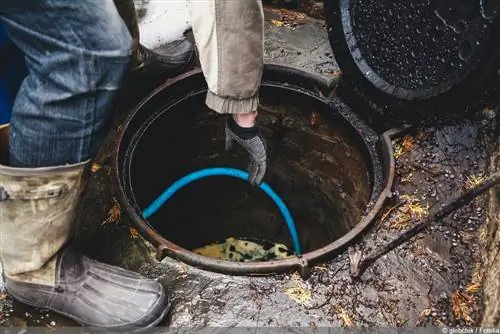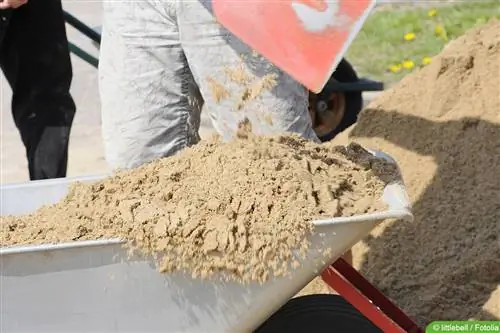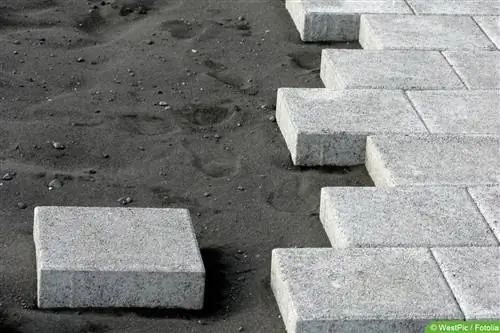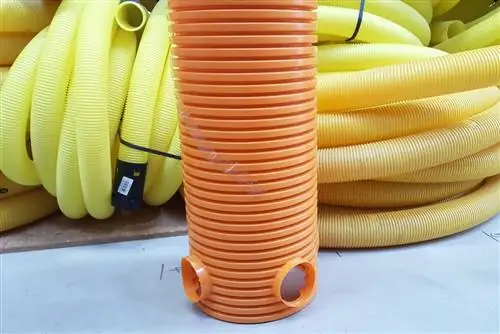- Author admin [email protected].
- Public 2023-12-17 03:39.
- Last modified 2025-06-01 06:48.
When building a new building, not only is the house built, the sewage system also has to be connected to the local community sewer. Some municipalities require the installation of an inspection shaft for wastewater from the outset, and some landlords install one even if it is not required. Which material, whether concrete or plastic, is better is explained in the following article.
Inspection shaft for wastewater - definition
When an inspection shaft for wastewater is required when building a house, the first question that arises for many people is what this actually is. Everyone is familiar with manhole covers on the streets and underneath there is nothing other than an inspection shaft for wastewater. This can be accessed during road construction and is primarily used for maintenance and repair of the sewers. The situation is similar with the sewage shaft on your own property. This should primarily ensure the following:
- easy cleaning of the pipes
- Maintenance and maintenance of property drainage
- Checking the lines
- is not suitable for entry on a property
- can vary in size upon request or depending on the community
- usually made of concrete or plastic
The purpose of a sewage shaft is, above all, to bring together the various pipes that come from the house, to bridge the heights of the various pipes and to change the directions, for example up to the connection to the local sewer system. It therefore makes sense to always install an inspection shaft on your own property, even if the local building authority does not require it.
Tip:
Sewage shafts used to be generally made of concrete, but nowadays plastic is increasingly being used. This is not only due to the costs, but also because the concrete walls are more likely to suffer damage, for example in the form of corrosion.
Concrete or plastic
There are no regulations as to which material must be used for the sewage shaft. As a rule, the construction trade offers shafts made of concrete as well as various plastic materials. It therefore makes sense, above all, to clarify in advance with the municipality's responsible sewer network operator which material makes more sense in the specific case and, above all, which material is required. If it is irrelevant which material should be used, it is important to weigh up the advantages and disadvantages of the two materials for a sewage shaft.
Plastic advantages and disadvantages
A plastic shaft is very light in contrast to a concrete shaft. In addition to transport, this also makes assembly easier. The plastic shafts also offer the additional advantages of being absolutely sealed against rising groundwater. They are also very durable because substances in the wastewater that can attack the concrete have no effect on the plastic pipes. However, one disadvantage of plastic shafts is the purchase price, as they are significantly more expensive than concrete shafts. But this price is calculated as follows:
- Plastic shafts significantly more durable
- An exchange after a few years is therefore impossible
- no heavy machinery required for installation
- these already cost a lot of money even when renting
Tip:
As a rule, and if the municipality does not provide any information on this, it makes more sense to create plastic wastewater shafts for a home that is only used for private purposes, as these are also manufactured on a small scale, as is usually the case needed in a private household.
Various plastic materials
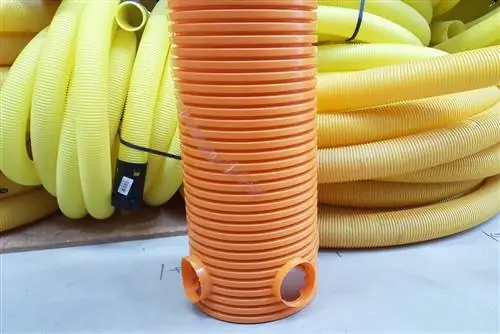
In contrast to concrete sewage shafts, plastic shafts are available in two different materials that can be used for wastewater disposal. The following types of plastic are available for the wastewater shafts as follows:
- Polyethylene PE
- Polypropylene PP
Which plastic material should be used when creating a sewage shaft depends on what it has to do. Before installation, it must be determined which substances, other than water, will ultimately pass through the shaft. The temperature level of the respective liquids also plays a role, as does whether they could also contain substances that are hazardous to substances.
Sewage shaft made of polyethylene PE
Shafts made of PE are used primarily for wastewater disposal. Because they are very durable and robust. They are also insensitive to mechanical influences and are very light. Especially in private houses, the pipes are usually made of PE, so that the connection between the pipe and the inspection shaft can be very easily connected by welding, thus ensuring a permanent seal.
Inspection shaft made of polypropylene PP
PP has the property of excellent chemical resistance. The shafts made of this material can be used wherever wastewater flows with substances that are hazardous to substances. This can be the case, for example, in a home where a hairdresser's shop is to move in at the same time. A lot of work is done here with chemical agents, all of which disappear down the drain into the sewage system. But a PP shaft is also recommended for other houses that are used for living and working at the same time.
Concrete advantages and disadvantages
In contrast to the plastic sewer shaft, the concrete shaft has many disadvantages. On the one hand, the individual connecting pieces are very heavy due to the material used and therefore cannot be easily carried. Further help from machines is required during delivery and lowering into the ground. In addition, a concrete shaft is not as durable as one made of plastic, because there are many substance-endangering components that could permanently damage the concrete shaft as it passes through and thus make it permeable. Other advantages and disadvantages for a concrete shaft are the following:
- Sewage shafts on a property usually of small diameter
- then a concrete shaft is not so suitable
- is only offered from a certain large diameter
- Help is needed for the work due to the heaviness of the material
- Concrete shafts are cheaper to purchase
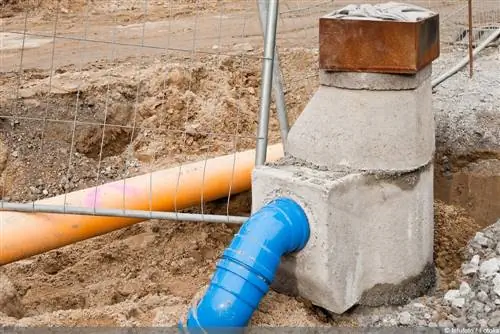
If you decide on a concrete shaft because of the price, you should keep in mind that a plastic shaft could be cheaper in the long run due to its longer service life. In addition, additional costs for the machines used, without which the heavy shaft cannot be lowered into the ground, must be taken into account.
Tip:
Since the concrete shafts are usually made with a larger diameter, they are ideal for use in road construction, but these diameters are not needed in private households; plastic shafts should be used here.
Sewer shafts, not available in hardware stores
Anyone who builds a home or renovates an old house will sooner or later come to the question of whether a sewage shaft needs to be installed. If this is the case, then the pros and cons for the different materials must be clarified. Sewage shafts are not available at the simple hardware store around the corner. It therefore makes sense to consult a specialist when considering this. This can provide answers to the following questions:
- does the property need an inspection shaft
- not every municipality requires installation mandatory
- Ask the relevant building authority first
- the expert knows advice on the material
- also with the circumference of the shaft
- Shafts are optionally adjusted
- The most important thing here is the correct angle of inclination
Tip:
If you are building a house and need to install a sewage system, you should definitely contact a specialist, even if you later carry out the work yourself. Even when buying an old house, the sewage systems and any inspection shafts on the property must be checked carefully and replaced if there are signs of wear.

